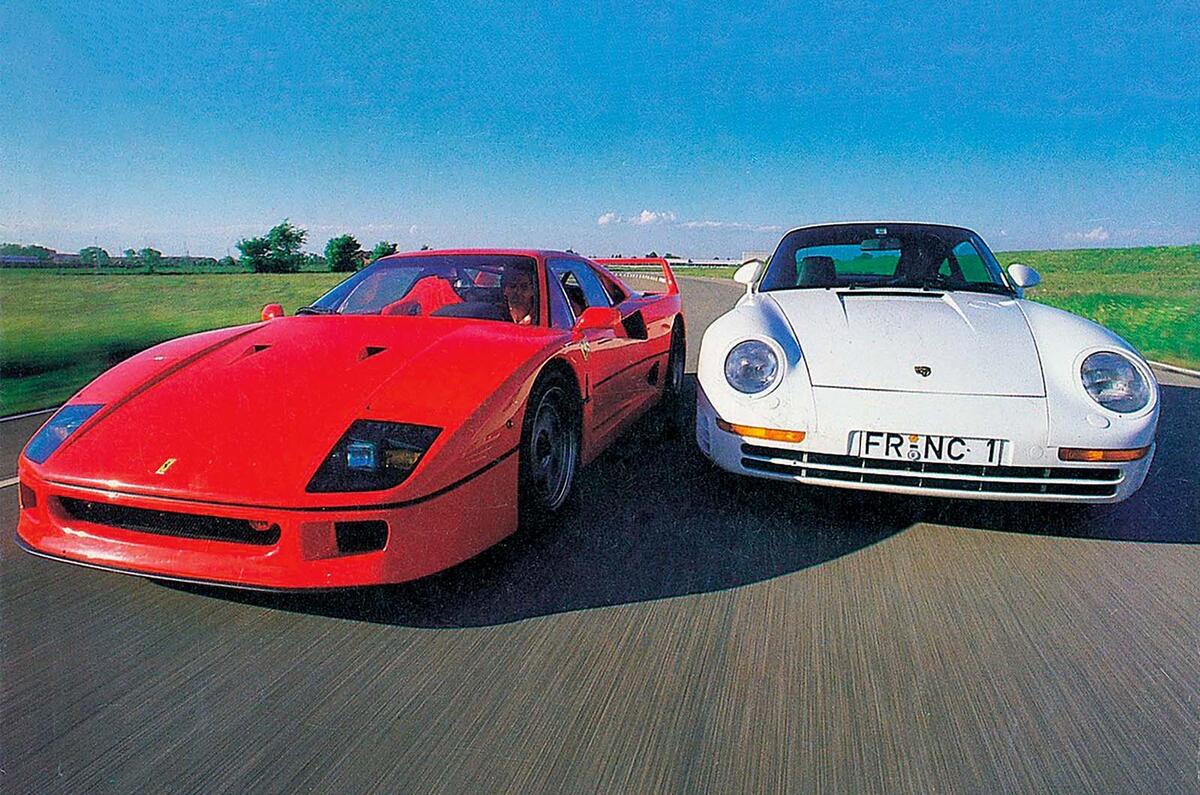Blockbuster supercar showdowns are rare and always momentous occasions. Typically coming perhaps only once a decade, comparisons of the latest boundary-pushing feats of incredible engineering never fail to excite and inspire.
And one of the greatest of all appeared in Autocar in the summer of 1988: Ferrari F40 versus Porsche 959.
Despite them appearing at first glance as the most natural of rivals, a closer look quickly revealed fundamental contrasts between what were the two fastest production cars in the world.
The mechanically simple F40 weighed merely 1100kg, thanks to innovative use of carbonfibre and Kevlar, and made a stonking 478bhp, whereas the 959 weighed 1450kg and produced 444bhp but gained significant advantages elsewhere by being a technical tour de force.
Our test 959 was owned by privateer endurance racer and F1 team owner Walter Brun, who we accompanied to Italy to meet an F40 with the Scuderia’s Gerhard Berger at the wheel. Their attention turned immediately to the F40.
As the final car overseen by Enzo Ferrari himself, it was always going to be a special chapter in Maranello’s history. And thanks to that lightweight construction and a twin-turbocharged V8 engine “with performance characteristics that make others look as flat as a pizza”, it had become the first-ever production car to break the 200mph barrier.
Berger praised it as “the best road chassis I have ever driven” and Brun said: “With racing tyres and some fine-tuning, it would easily run at the front of category C2 [the pinnacle of sports car racing].”
Enjoy full access to the complete Autocar archive at the magazineshop.com
Perhaps surprisingly, the F40 had a performance advantage over the 959 not just in terms of top speed – 201mph versus 197mph – but also through the corners. So much so that it would be about 10sec per lap quicker than its German rival around Ferrari’s Fiorano test track.
“It runs fantastically well,” said Berger. “It bites from around 3000rpm and upwards of 3500rpm it really takes off as if the turbos are constantly supplying full boost.”
We added: “Beyond 3500rpm, there is such an abundance of power and torque that Berger had power oversteer any time he felt like it.” Indeed, he considered it was “nearly an act of provocation to offer a car with so much power and so light weight to an ordinary driver”.



Join the debate
Add your comment
It was truly a classic confrontation between two completely different supercar philosophies, but both left their legendary mark.